What is it 1-3-1 No Trap Zone?
This is a zone defense in a 1-3-1 formation with the primary focus being on containing dribble penetration and keeping the ball outside the 3 point line. With a no trap 1-3-1 defense, the defense is really passive and tries to force the offense into bad shots and passes. The goal of the outside defenders is to get the offense to pick up their dribble and when they do everybody retreats from the ball and tries to fill all passing lanes to keep the ball dead and force that player into a bad pass. It is different than a trapping 1-3-1 defense which I am going to break down in the near future and you will be able to read it once I finish it. The defense tries to guard the ball with 1 defender while everybody else plays in the gaps to try and keep the ball from being passed.
Advantages of a 1-3-1 No Trapping Zone
1. Confusion– This is not a defense seen very often. If a team runs a 1-3-1, it is usually aggressive and trapping. By doing the unexpected and not trapping, it could lead to the offense being confused. This confusion can lead to bad shots and bad passes. Bad shots and passes should give the defense the ability to get out in transition and potentially get good easy shots on offense.
2. Easy to learn and run– This is not a defense that needs a certain personnel group to be able to run. If there is 1 fast player that can run the bottom position then this defense could be ran. The ball has to be guarded but the other 4 players are playing passing lanes and gaps. Because of this, the movement of each defender, except for the bottom man of the 1-3-1, can greatly limit their movement within the defense. This means slow players can run this defense just as well as quick players. Once the defenders understand where the natural passing lanes are then positioning is easy to learn. Once the general positioning is learned then the defenders can learn to adjust to the offensive players to stay in the passing lane.
3. Hide bad players or players in foul trouble– This defense is good if a player is a bad defender. They can learn positioning without every really having to guard. So bad defensive players can be hidden in this defense. The ability of the offense to exploit the bad defensive player is greatly reduced. Likewise if your team is not very deep then this defense can be used if some of the main players start to get into foul trouble.
Disadvantages of a 1-3-1 No Trapping Zone
1. Tempo– Since the defense is not trapping, the amount of pressure put on the ball is not as high as it could be. Because of this the offense should never feel unsafe. This means the offense can dictate the tempo of the game. I believe tempo is huge in high school, junior high, and youth leagues in determining a winner and this defense gives the advantage to the offense.
2. Cannot take away offenses best player– Because this is a passive defense the offense will be able to get the ball into their best players hands every possession. This could be turned into an advantage if you can force the player into open space then collapse on them but the best player still has the ball in their hands each possession. I like to try and take away the best player on the opposing team and this defense has no way of doing that.
3. Open Shots– Since this defense is designed to play the passing lanes, there will be times where the offensive players are left without anyone directly guarding them. So if the offensive player shoots the ball then the defense does not the time to close all the way out on the shooter. This leads to open shots. If the offensive team makes those shots then the defense is in serious trouble. But if the offensive team does not make the open shots then this disadvantage goes away.
Positions of a 1-3-1 No Trapping Zone
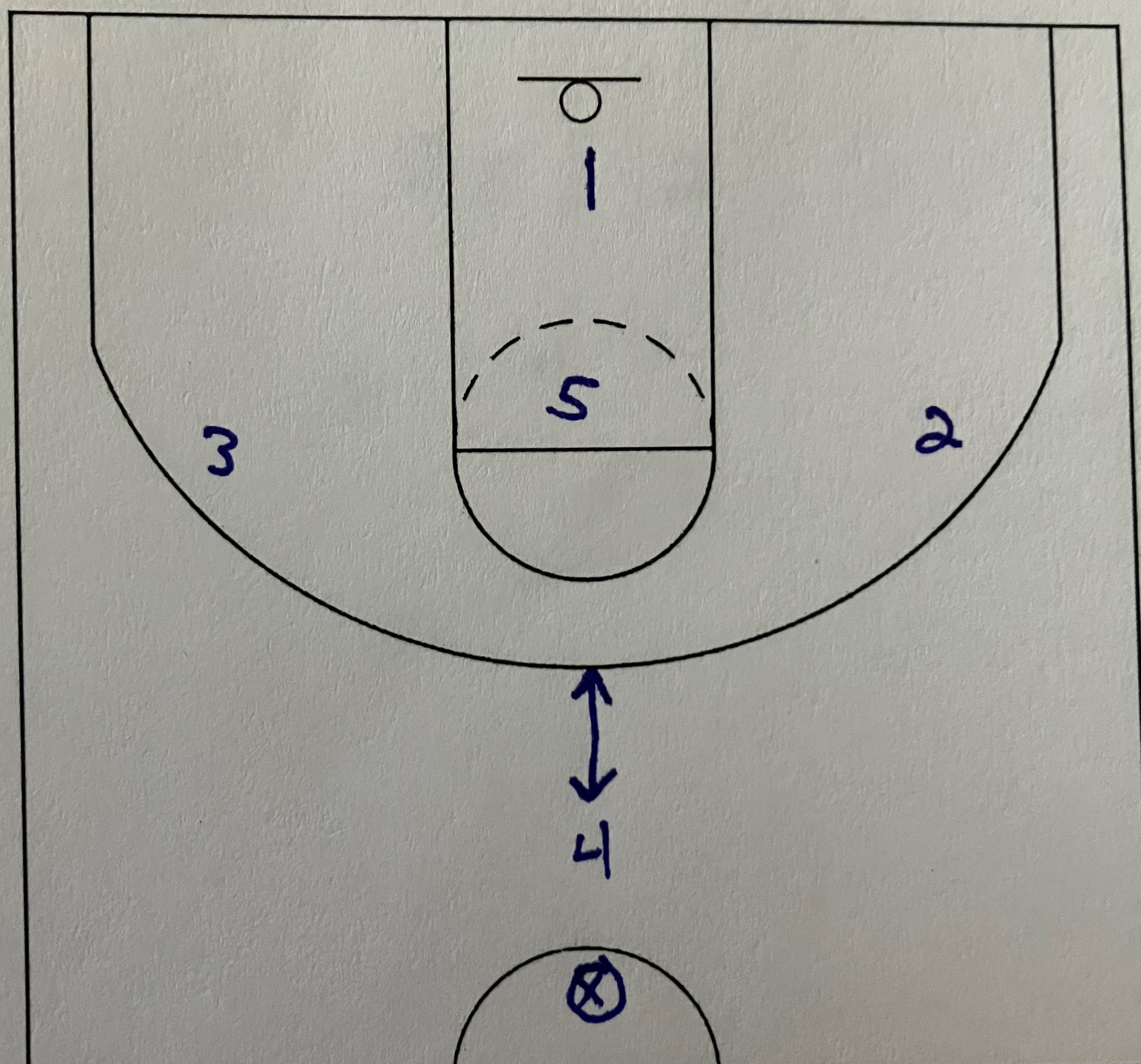
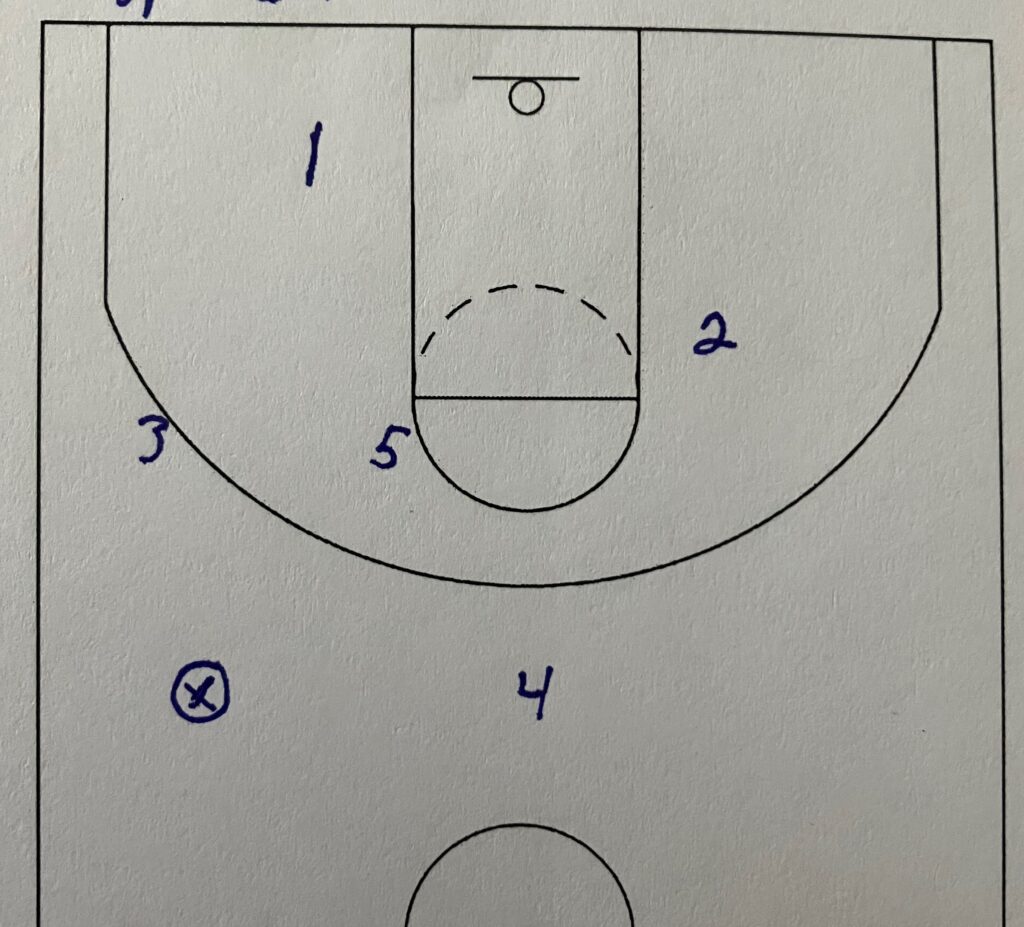
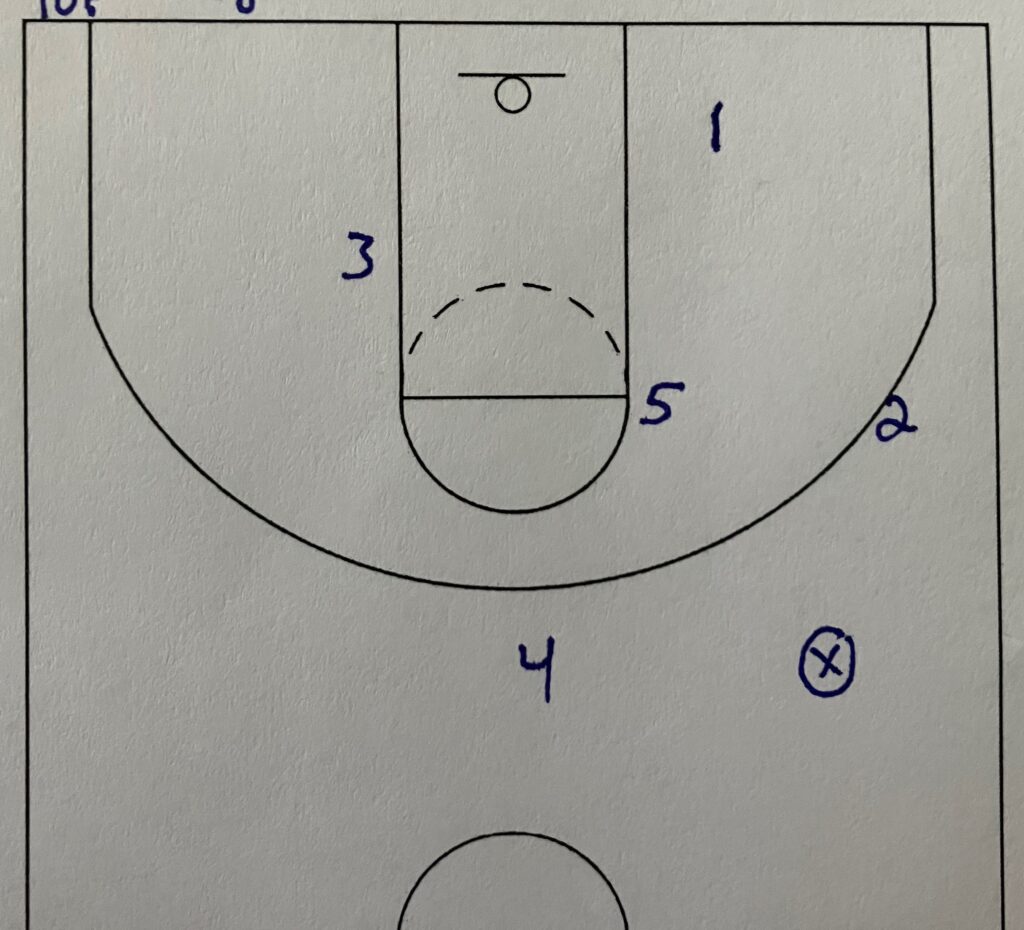
The initial setup of the 1-3-1 will depended on where the ball starts on the floor with the offense. If the ball starts in the middle of the floor then the 1-3-1 is set without having to move players. However, most teams will have the ball on one side of the floor or the other. The top man, in this case the 4 man, will try to keep the reversal pass from happening.
The wings, 2 and 3, are doing the same job depending on which side the ball is on. Ball side is trying to stop the pass going to the corner. The backside wing will drop to prevent the through pass to the opposite block. The backside wing is also responsible for the backside rebound which is where most rebounds are going to come off the basket.
The middle man, 5 man, is responsible for guarding the dribble penetration. This defense is good in looking like it is giving space to drive and then collapse if necessary on the drive. The 5 man is the defender responsible to stop any drive from the top.
The bottom man, 1 man, basically mirrors the ball as it moves side to side when the ball is out front.


This is where the trapping versus non-trapping 1-3-1 really change. In a trapping 1-3-1, the defense wants the ball in the corner to trap. In a non-trapping 1-3-1, the defense guards the ball 1 on 1 and the other defenders are trying to play the passing lanes. Again the defense is just a mirror of itself depending on which side the ball is on.
The bottom man, 1 man, guards the ball. They have corner to corner responsibility. The middle man, 5 man, takes the ball side block. The ball side wing, 2 or 3, is trying to prevent the pass going up the sideline. The back side wing, 2 or 3, is taking the entire backside court. Depending on the offensive players they will be anywhere from the backside block up to the backside elbow. They have backside rebounding responsibility so they can not wonder too far away from the block. This is a spot to get a lot of steals. They are trying to read the skip pass out of the corner if possible. Finally the top man, 4 man, is taking away the hi-post. This could put them anywhere from the mid-post up to the 3 point line.
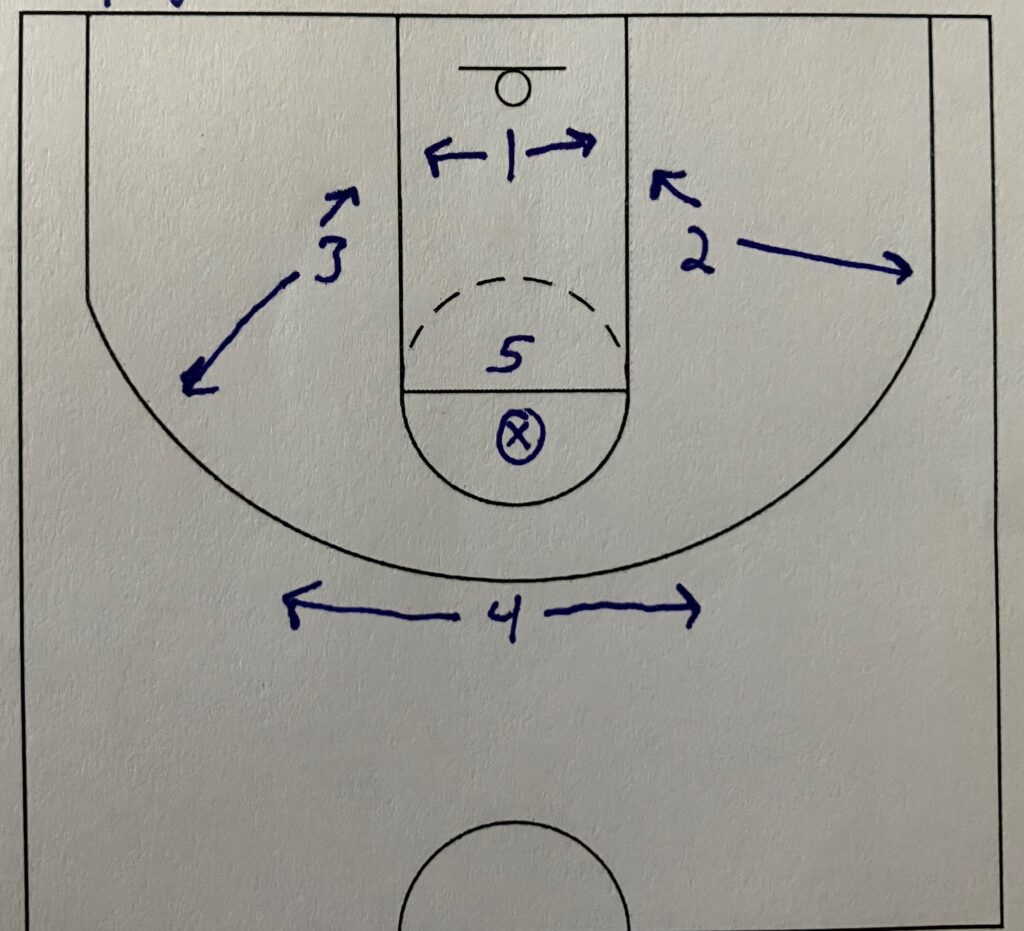
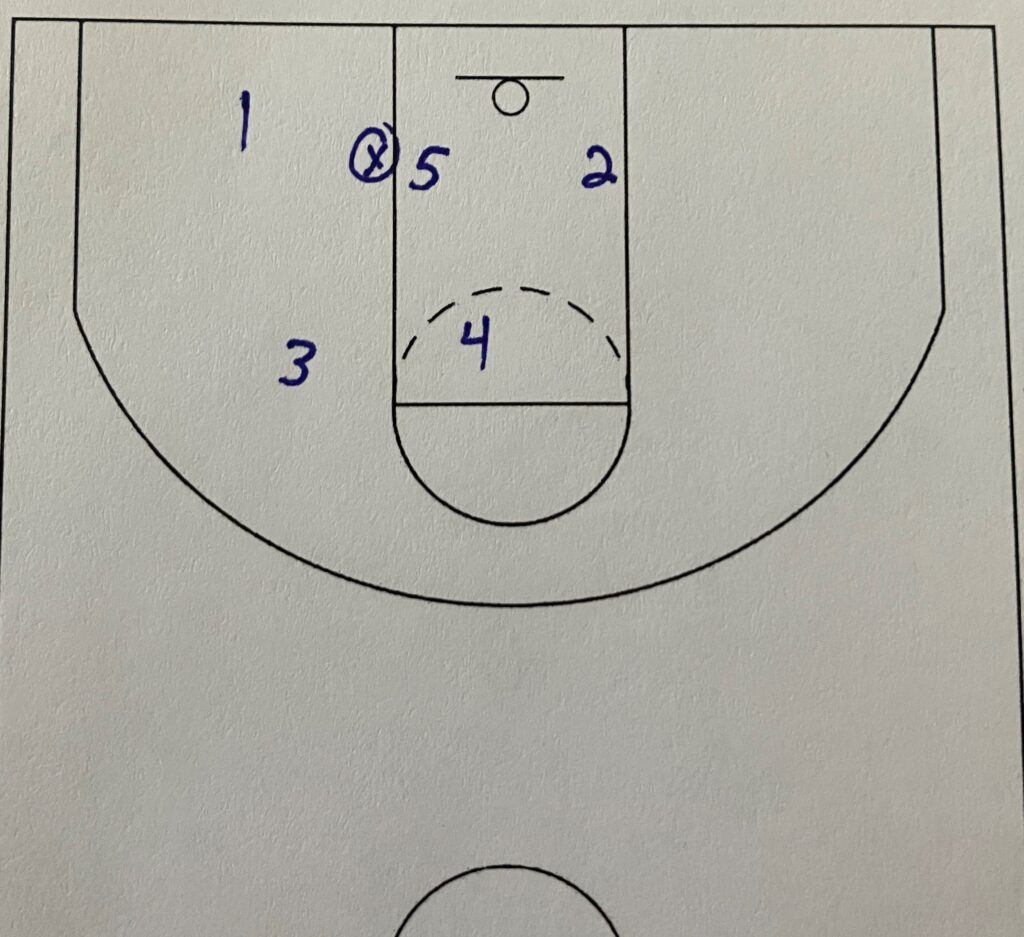

If the ball gets into the post then the defense can morph quite a bit. If the ball lands in the hi-post then the defense should almost become a matchup zone. The middle man, 5 man, guards 1 on 1. The wings, 2 and 3, are moving from the block out to the 3-point line guarding the kick-out pass. The bottom man, 1 man, is guarding the offensive player closest to the basket. The top man, 4 man, is finding the man closest to the hi-post on the top. The 1-3-1 morphs into a matchup zone while the ball is in the hi-post. As the ball is kicked-out then it morphs back into the 1-3-1. As a defense you are trying to force the hi-post offensive player to have to shoot the ball once they catch.
The exception to this is if your defender can not guard 1 on 1, then the defense should collapse forcing the kick-out. The collapsing 1-3-1 defense is going to give the offense wide open 3’s. But if the offense is not a good 3 point shooting team then this might be an advantage to the defense to give the open 3.
If the ball gets into the low block, then the 1-3-1 will look like a 2-3 zone. The middle man, 5 man, is guarding 1 on 1. The bottom man, 1 man is taking away the ball side corner kick-out. The ball side wing, 2 or 3, is taking away the wing kick-out. The back side wing still has backside responsibility. The top man, 4 man, is still taking away the hi-post area to top of the key kick-out.
In order to run this effectively without having to collapse at all the middle man, the 5 man in the diagrams, must be a great defender. The middle man has to be able to guard a drive if the ball is out front. But they will also have to be able to guard 1 on 1 in the low block as well.
Trapping in a 1-3-1 No Trap Zone
The whole idea of this 1-3-1 is not to trap. There should not be any trapping in this style of the 1-3-1. A trapping 1-3-1 is also a style of 1-3-1 defense which I have discussed in a separate article. Follow the link to view the trapping 1-3-1 article.
Personnel Needed for a 1-3-1 No Trapping Zone
The only personnel needed is at least 1 really quick player to run the bottom spot. This person has to be able to cover corner to corner. Everybody else should not have to move much more than half of the width of the court. Plus the idea is to play in the passing lanes so passes should be slow in getting from offensive player to offensive player. Outside of that necessity the other players can be anybody. They can be tall or short. They can be fast or slow. This defense is about positioning more than anything.
In a perfect world the players would be tall and fast. The point man out front should be one of the tallest players on the court. An athletic tall player is perfect out front. The two wings should be 2 of the taller players as well. The offense is going to be passing around and over the point man and wings more than anybody else so putting three tall players in those spots should make the offense struggle passing the ball.
This defense is also different in that you want the middle man to be somebody who can guard the ball decently. This person does not have to be a great defender but the wings and point man will be playing the passing lanes so this leaves the middle man guarding the dribble drive more often. If the middle man cannot defend the drive then the offense can attack him and get to the basket.
Keys to a 1-3-1 No Trapping Zone
1. The first key to this 1-3-1 no trapping zone defense to keeping the players extended. The players will want to collapse down towards the lane as the offense starts to pass the ball around. The defensive players must extend out into the passing lanes when the ball is around their area. When done correctly the defense invites the ball to drive into the middle of the zone. The point man must stay out above the 3 point line except when the ball is in the corners. The wings must be around the 3 point line when the ball is on their side. Without this extension, the offense can easily pass the ball around. Quick ball movement will create openings the offense can take advantage of.
2) Quick in air, slow in hand. The defense needs to be quick in their movements when the ball is in the air. On a pass the defense should be sprinting into their positions to try and prevent a 2nd quick pass. Once the ball is caught, if the defense has sprinted to their spots, then the defense should be in the right position so the offense has to hold the ball longer than they want. This now causes the offense to play slow. Since the offense is now playing slow, the defense will also be playing slow.
3) This defense is also really good against a drive heavy point guard. The defense gives the look of a bunch of open room to drive. However, the defense can adjust to let the guard drive into the middle and then collapse all around them giving them no space. It can frustrate guards who want to drive because their eyes tell them they have the space to drive but when they get there the defense swarms around them. Again this adds to the confusion of the offense because the eyes are telling offensive players one thing and then the defense does something different.
Youth Basketball
Personally I like all youth level to be playing man to man defense. However, if a zone defense is to be used this 1-3-1 no trapping zone is at the top of the list. All too often youth teams will press or trap and since the other teams are not skilled enough to handle the pressure, they turn it over and leads to layups. But no skill has been taught aside from being ultra-aggressive. Eventually the other teams will become skillful and ultra-aggressive defenses will not work.
By not trapping out of the 1-3-1 it forces the defense to be in the right spots. The no trap 1-3-1 requires the defenders to understand positioning and observe and react to the offense. It is going to teach anticipation by making the defenders understand how to position themselves not for the current pass but for the next pass. Anticipation, positioning, and reading the offense and reacting are all good skills to have at any level of basketball. This zone defense teachers those 3 skills.
Conclusion
The 1-3-1 is a passive defense based on positioning and anticipation. It can cause problems for an offense because it works backwards from most all other defenses. Most defenses want pressure and this defense gives the offense space. If a team or coach wants to play 1-3-1 then I would have this no trapping zone alongside a trapping 1-3-1 call so the defense can be changing the tempo of the game and never let the offense get a good grasp on what the defense is doing. The learning of positioning and having to read and react to the offense allows the skills learned here to be applied in other places in basketball. Overall I prefer man to man defense but given a quick player and a little bit of height, the 1-3-1 zone defense is a good secondary option.

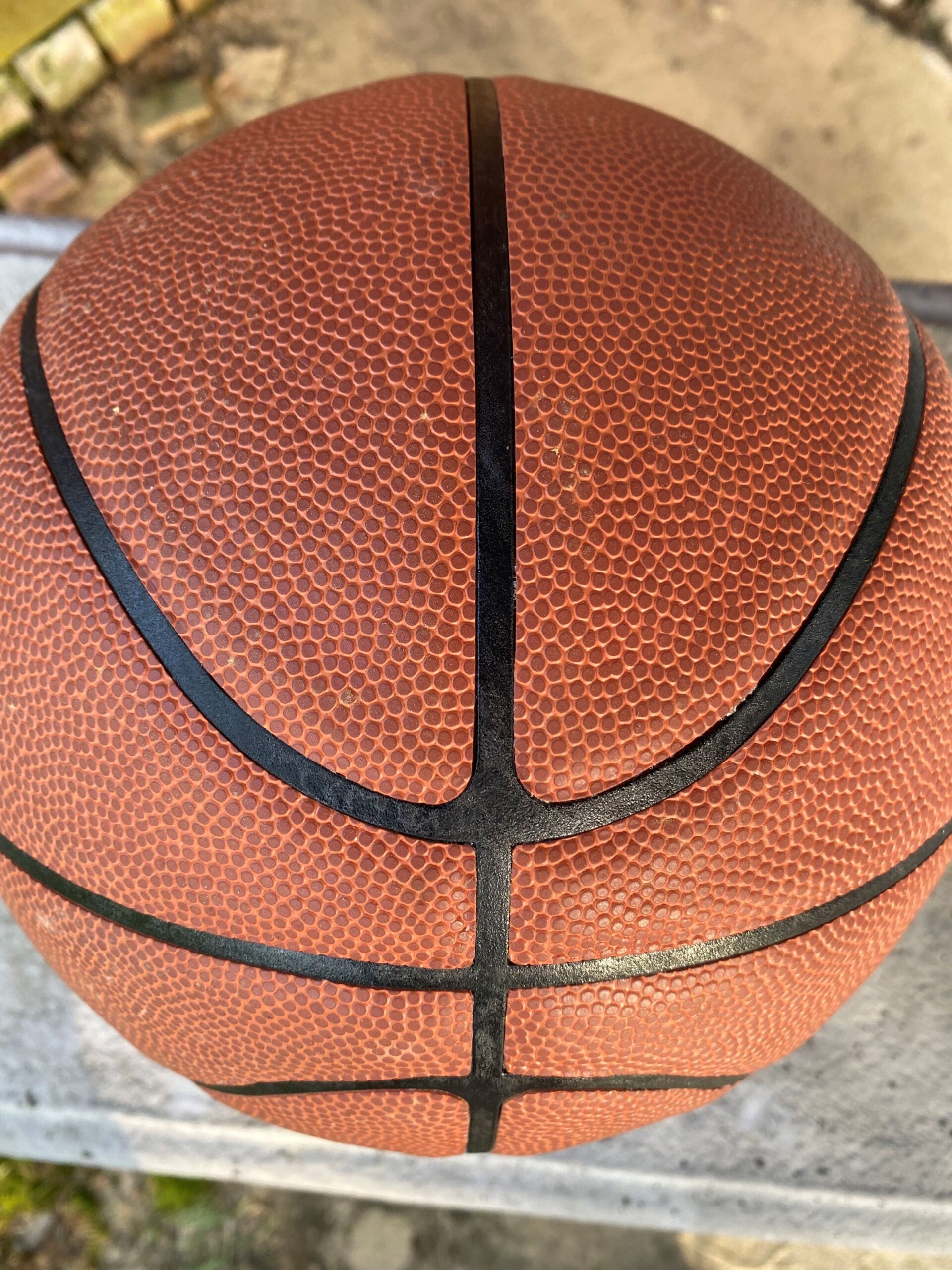
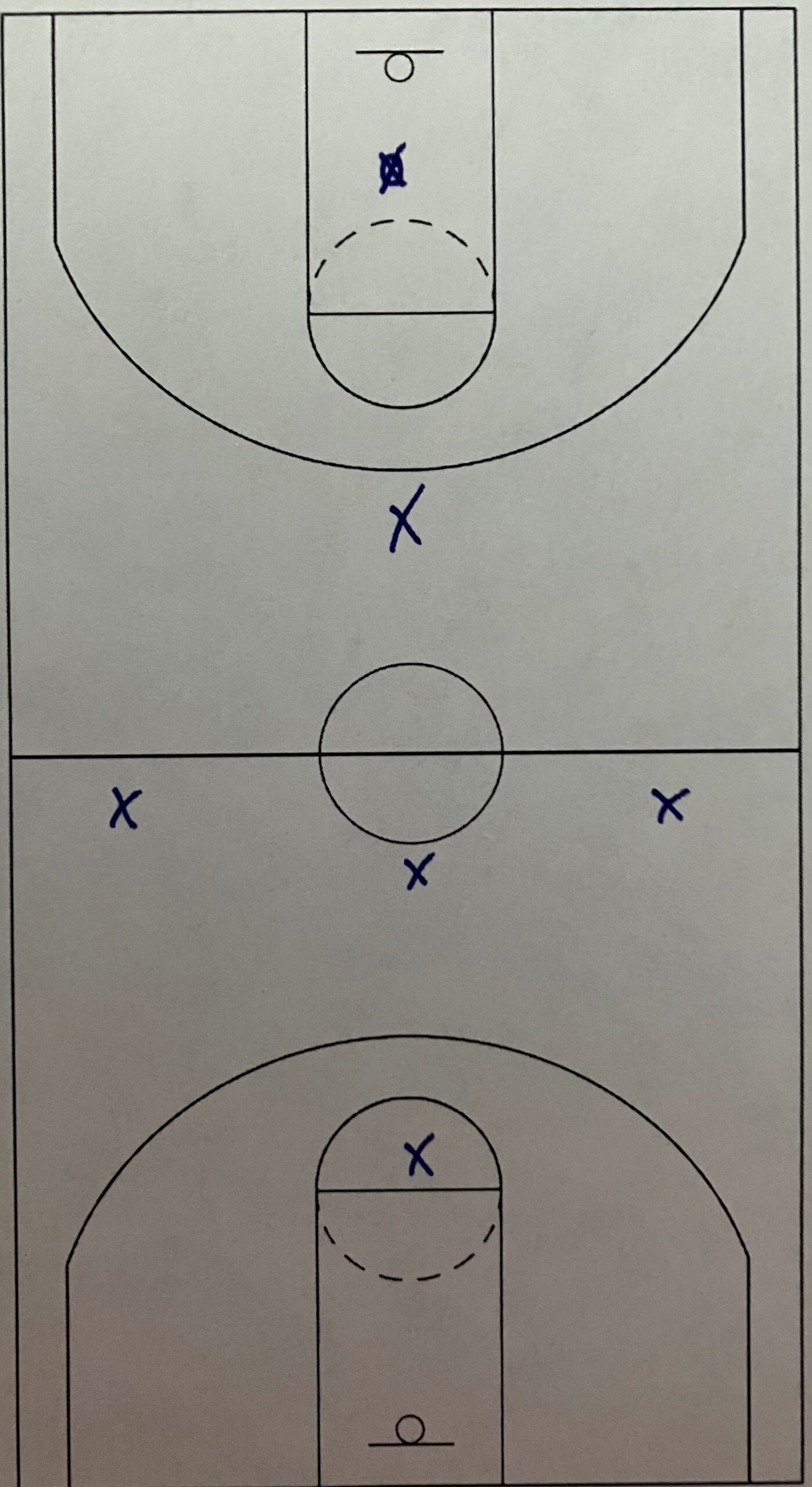
3 thoughts on “1-3-1 Zone No Trap Defense Guide”